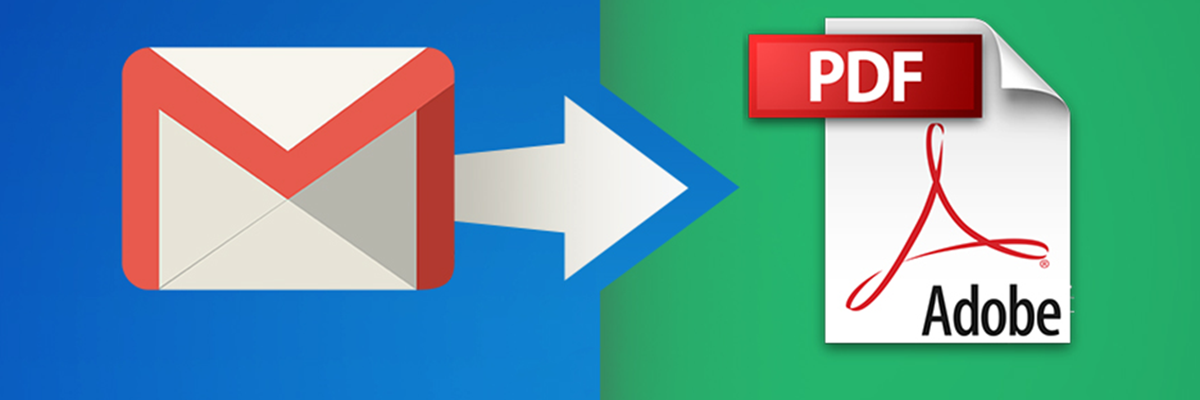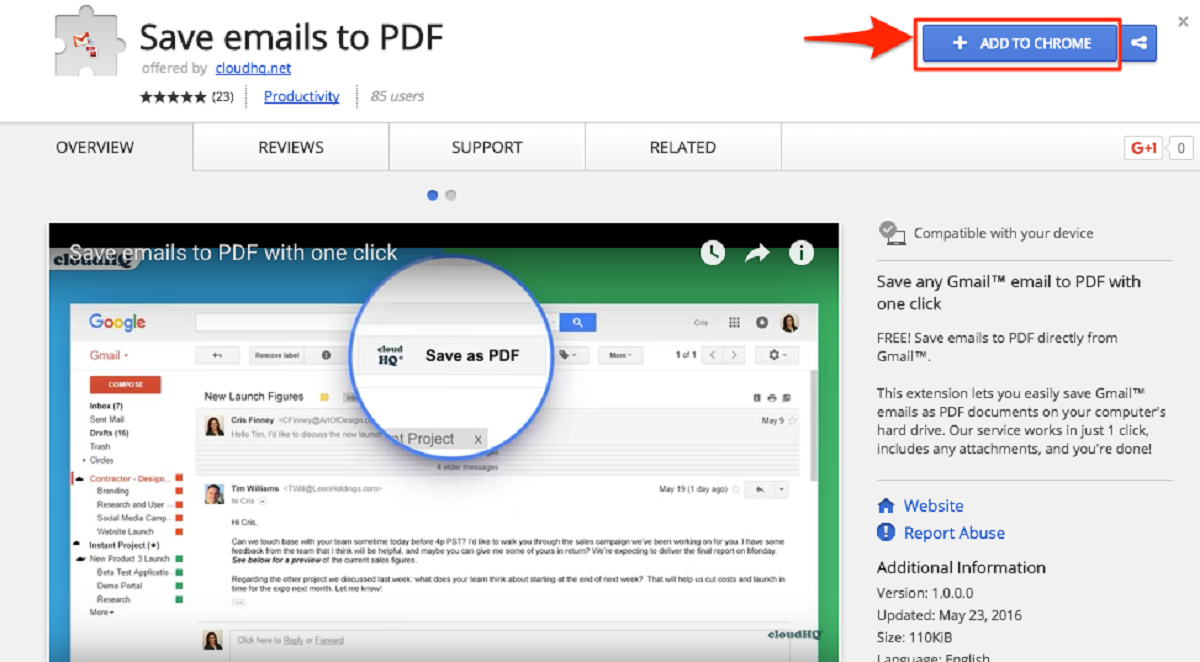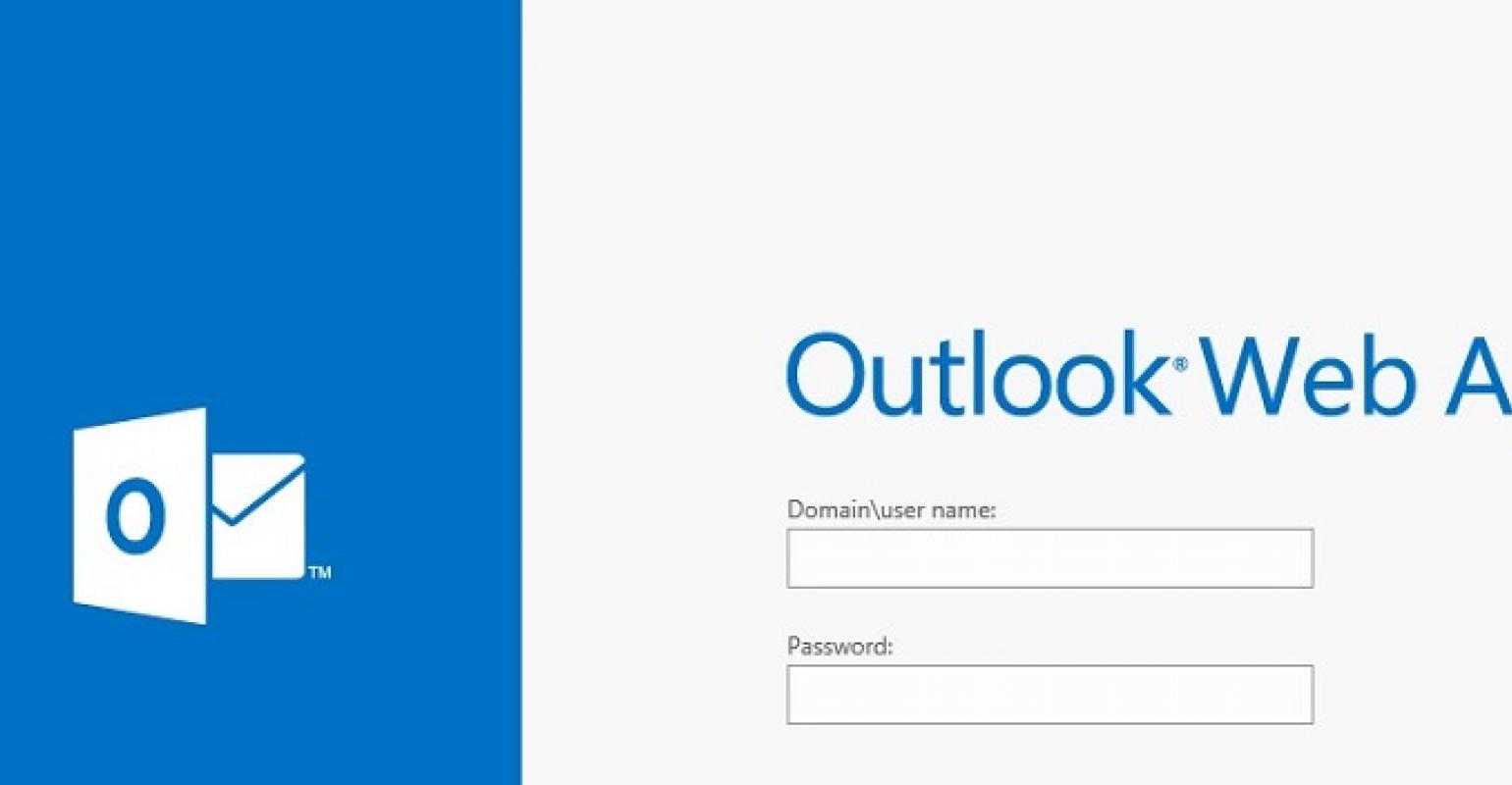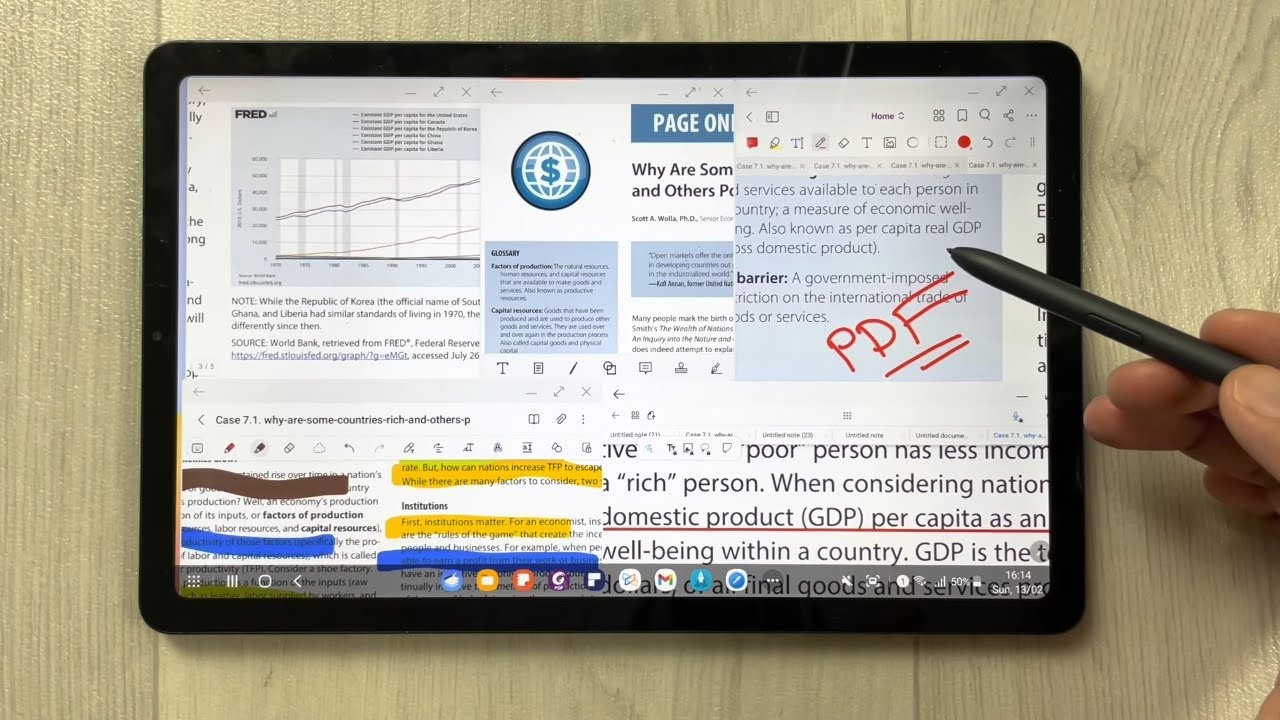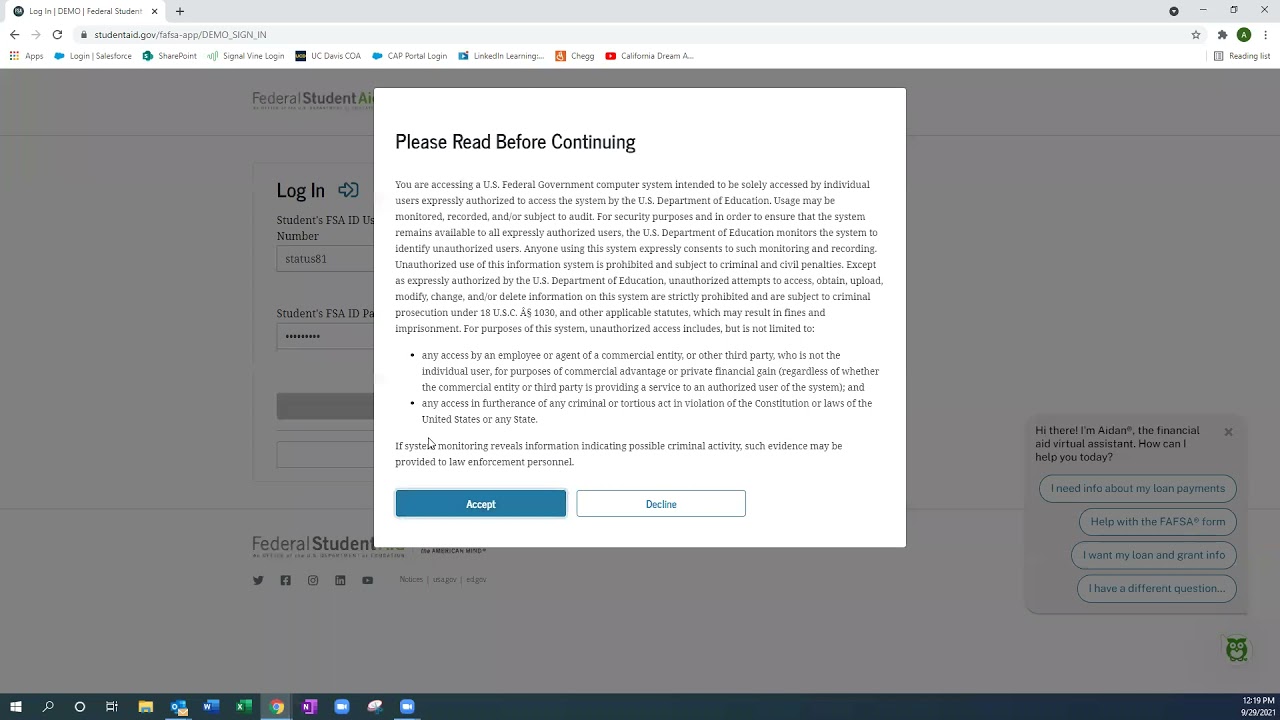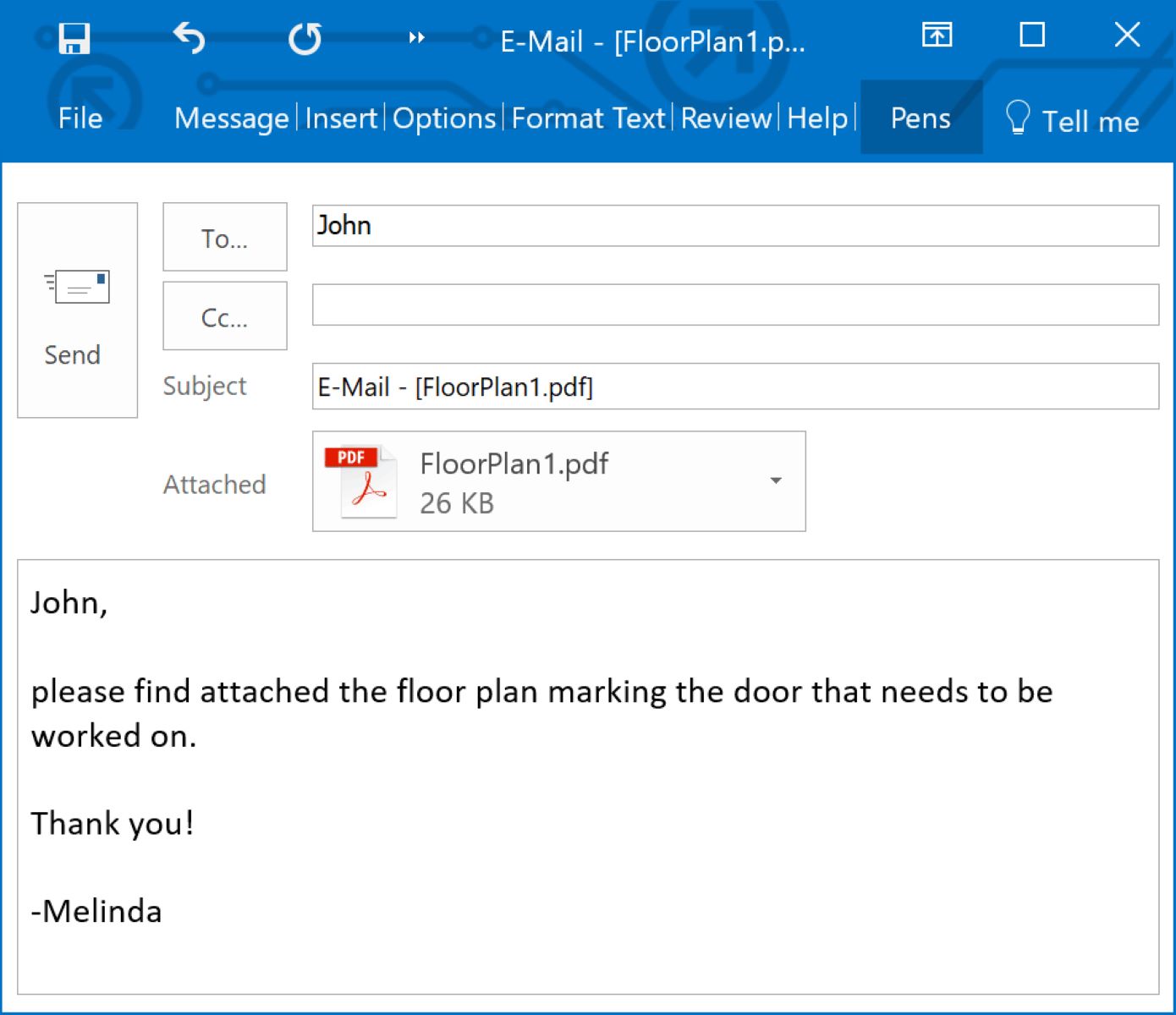Introduction
Welcome to our guide on how to download an email as a PDF. With the increasing need to store and share important information digitally, converting an email message into a PDF document can be incredibly useful. Whether you want to preserve a conversation thread or save an important receipt, having an email as a PDF makes it easily accessible and shareable.
In this tutorial, we will walk you through the step-by-step process of downloading an email as a PDF. Whether you’re using a web-based email service like Gmail, Yahoo Mail, or Outlook, or a desktop email client like Microsoft Outlook or Mozilla Thunderbird, we have you covered. By the end of this guide, you’ll be able to effortlessly convert your emails into PDF files, ready for archiving or sending to others.
Converting an email to PDF format offers several benefits. Firstly, a PDF file is widely supported across different platforms and devices, ensuring that the recipient can view it without any compatibility issues. Secondly, a PDF document retains the original formatting, including images and hyperlinks, making it ideal for preserving the original look and feel of the email message. Lastly, a PDF file is typically smaller in size compared to other file formats, making it easier to store and share.
Whether you need to save a legal document, an important conversation, or a confirmation email for future reference, having an email as a PDF comes in handy. So, let’s dive into the step-by-step process and learn how you can download an email as a PDF file.
Step 1: Open your email service provider
The first step in downloading an email as a PDF is to open your email service provider. This could be a web-based service like Gmail, Yahoo Mail, Outlook, or any other email client that you use.
If you’re using a web-based service, launch your preferred web browser and navigate to the email service provider’s website. Enter your login credentials, such as your username and password, to access your email account.
If you’re using a desktop email client, locate the application icon on your computer and double-click to open it. The specific steps to open the email client may vary depending on the program you are using, but it is typically located in the Start menu (for Windows) or the Applications folder (for Mac).
Once you have opened your email service provider, you will be directed to the main email interface. This is where you can view your inbox, sent messages, drafts, and other folders associated with your account.
Make sure you have a stable internet connection before proceeding to the next steps. It is also a good idea to check if your email account is properly synced or connected to the server, as this is necessary for the successful retrieval of your emails.
Now that you have successfully opened your email service provider, let’s move on to the next step to find the email you want to download as a PDF.
Step 2: Find the email you want to download as PDF
Once you have accessed your email service provider, the next step is to locate the email that you want to download as a PDF. This could be an email that contains important information, attachments, or simply a conversation thread that you want to preserve or share.
In most email service providers, you will find your emails organized into different folders such as “Inbox,” “Sent,” “Drafts,” and others. Navigate to the appropriate folder where you think the desired email is located.
Depending on your email service provider, you can search for the email using various methods. Look for a search bar or a search icon within the email interface. Enter relevant keywords, sender’s name, subject, or any other details that can help you narrow down the search.
If you are unable to find the email through a search, you can manually browse through your emails by scrolling or using pagination to view older or newer emails. Look for specific dates or subjects that may help you locate the email you are interested in.
Some email services also offer advanced sorting and filtering options. These can be helpful when you have a large number of emails and need to quickly locate a specific one. You can filter emails based on categories like unread, starred, attachments, or by applying custom filters based on sender, subject, or keywords.
Take your time to find the email you want to download as a PDF, ensuring that it is the correct and complete email that you want to preserve. Once you have found the desired email, move on to the next step to learn how to open it.
Step 3: Open the email
After locating the email you want to download as a PDF, the next step is to open it. Opening the email will allow you to view its content, including any attachments or embedded images.
To open the email, simply click on its subject line or the sender’s name. In most email service providers, clicking on the email will open it in a new window or within the same interface, depending on the settings and preferences you have set up.
Once the email is open, you can read its contents, review any attachments or images, and take note of any specific sections or information that you want to include in the PDF. Make sure to thoroughly review the email to ensure that you have everything you need before proceeding to the next steps.
Some email service providers may display the email in a preview pane, allowing you to read it without opening it in a separate window. If this is the case, make sure you can see the entire email’s content in the preview pane, including any attachments or images. If necessary, you can maximize the preview pane or open the email in a new window for a better view.
Remember, it’s important to carefully review the email’s content to ensure that you capture all the relevant information in the PDF. If you need to make any changes or additions, you can do so before proceeding to the next steps.
Now that you have successfully opened the email, let’s move on to the next step, where we will explore how to locate the download option.
Step 4: Locate the download option
After opening the email, the next step is to locate the download option. To download the email as a PDF, you will need to find the specific feature or button that allows you to save the email in PDF format.
The location of the download option may vary depending on your email service provider and the interface you are using. Here are a few common places where you can typically find the download option:
- 1. Toolbar or Menu: Look for a toolbar or menu at the top or side of the email interface. It may include options such as “More,” “Options,” or an icon that resembles a down arrow or a file download symbol.
- 2. Actions or More Options Dropdown: Some email service providers offer a dropdown menu with additional actions or options. Click on the “Actions” or “More options” dropdown to reveal a list of available actions, including the option to download the email as a PDF.
- 3. Right-click Menu: Another way to access the download option is by right-clicking on the email itself. This will typically open a context menu with various actions, including the ability to save the email as a PDF. Look for options such as “Save as PDF,” “Save as,” or “Download as PDF.”
Once you have located the download option, take a moment to ensure that it specifically mentions saving the email as a PDF. This is important as some email service providers may offer alternative download formats, such as plain text or HTML.
It’s worth noting that not all email service providers offer the ability to download emails as PDFs. If you cannot find the download option in your current email service provider, you may need to explore alternative methods or consider using a third-party email management tool that offers this functionality.
Now that you know how to locate the download option, let’s proceed to the next step where we will select PDF as the download format.
Step 5: Select PDF as the download format
Once you have located the download option, the next step is to select PDF as the desired download format. By choosing PDF, you ensure that the email is saved as a portable document format that retains its original layout and formatting.
Depending on your email service provider, there may be different ways to select PDF as the download format:
- 1. Click on the Download as PDF Option: If the download option provides different format choices, click on the option that specifies PDF. This could be mentioned as “Download as PDF” or similar wording indicating the PDF format specifically.
- 2. Select PDF from Drop-down Menu: If you see a drop-down menu listing various file formats, click on the menu and choose the PDF option from the available choices. Look for “PDF,” “Portable Document Format,” or an icon representing a PDF file.
- 3. Use a Specific PDF Download Button: In some cases, the email service provider may have a dedicated button specifically for downloading emails as PDFs. Locate this button and click on it to initiate the download process. This button might have a label like “Download as PDF” or be represented by an icon resembling a PDF file.
After selecting PDF as the download format, the email will be converted into a PDF file. The conversion process may take a few seconds, depending on the size and complexity of the email.
During the conversion, it is important to refrain from closing the email or navigating away from the page until the download is complete. Otherwise, the PDF may not generate successfully, and you may need to repeat the preceding steps.
Now that you have successfully selected PDF as the download format, let’s move on to the next step, where we will choose the location to save the downloaded PDF file.
Step 6: Choose the location for the downloaded PDF file
After selecting PDF as the download format, the next step is to choose the location where you want to save the downloaded PDF file. This allows you to specify the folder or directory on your computer where the PDF file will be saved.
When you click on the download option or button, a pop-up window or dialog box will typically appear, asking you to choose the destination folder for the PDF file. Here’s what you can do:
- 1. Choose the Default Download Location: The pop-up window may automatically suggest a default download location, such as your computer’s Downloads folder. If you are fine with this location, simply click on the “Save” or “Download” button to proceed.
- 2. Select a Different Folder: If you prefer to save the PDF file in a different folder or directory, click on the “Choose…” or “Browse” button to open a file explorer window. From there, navigate to the desired folder and select it as the download location.
- 3. Create a New Folder: If you want to create a new folder specifically for storing the downloaded PDF file, you can do so before selecting the folder. Look for an option such as “New Folder” or an icon representing a folder with a plus sign (+) to create a new directory.
Remember to choose a location that is easily accessible and suits your organizational needs. Consider selecting a folder that is easily recognizable and makes it convenient for future retrieval of the PDF file.
Once you have selected the appropriate download location, click on the “Save” or “Download” button to initiate the saving process. The email will be converted into a PDF file and saved in the specified folder on your computer.
Now that you have chosen the location for the downloaded PDF file, let’s move on to the next step, where we will click on the download button to start the download process.
Step 7: Click on the download button
With the download location selected, the next step is to click on the download button to initiate the process of downloading the PDF file of the email.
After selecting PDF as the desired download format and choosing the location to save the file, you will typically see a button labeled “Download,” “Save,” or an icon representing a download symbol. This button indicates that the PDF conversion is complete and ready to be downloaded.
To start the download process, simply click on the download button. Depending on your internet connection speed and the size of the email, it may take a few moments for the download to begin.
During the downloading process, it’s important to refrain from closing the web browser or navigating away from the page until the download is complete. Disrupting the download can result in an incomplete or corrupted PDF file.
Once the download is initiated, you will typically see a progress bar indicating the download’s status. The progress bar may show the percentage of the download completed or the estimated time remaining until the download finishes.
After the download is complete, you will receive a notification confirming the successful download. At this point, the email has been successfully converted to a PDF file and saved to the specified location on your computer.
Now you can navigate to the location where you saved the PDF file to access and manage it as needed. You can open the PDF using a compatible PDF viewer, such as Adobe Acrobat Reader or any other PDF reader software.
Now that you have successfully clicked on the download button, let’s move on to the final step where we wait for the download to complete.
Step 8: Wait for the download to complete
After clicking on the download button, the final step is to patiently wait for the download to complete. The duration of the download process may vary depending on the size of the email and the speed of your internet connection.
While the download is in progress, it’s essential to avoid closing the web browser or navigating away from the page until the download is finished. Doing so prematurely can interrupt the download and result in an incomplete or corrupted PDF file.
As the download progresses, you may see a progress bar or a percentage indicator indicating how much of the download is complete. This visual feedback provides an estimate of the remaining time or the progress made thus far.
It is important to remain patient during this step, especially if the email contains large attachments or if your internet connection is slow. Avoid performing any other bandwidth-intensive activities during the download, as this can potentially prolong the process.
Once the download is complete, you will receive a notification or see a message indicating the successful download. If you selected a custom download location, navigate to that folder to access the saved PDF file.
At this point, you have successfully downloaded the email as a PDF. You can now open the PDF file using a compatible PDF viewer, such as Adobe Acrobat Reader, to view its content, share it with others, or store it for future reference.
Congratulations! You have completed all the necessary steps to download an email as a PDF. By following this guide, you can now easily convert important emails into PDF files, making them accessible and shareable across different platforms and devices.
Remember to maintain good email management practices and regularly back up important emails to prevent any data loss. Consider organizing your PDF files in a logical and consistent manner to facilitate easy retrieval when needed.
Thank you for following this tutorial, and we hope it has been helpful in assisting you with downloading emails as PDFs!
Conclusion
In this comprehensive guide, we have explored the step-by-step process of downloading an email as a PDF. Converting emails into PDF format offers a convenient way to preserve important information, conversations, receipts, or any other email content that you may need for future reference or sharing with others.
We started by opening our email service provider and locating the specific email we wanted to download. Then, we opened the email to review its content and ensure that we had all the necessary information before proceeding. Next, we located the download option within our email client and selected PDF as the desired download format.
After selecting PDF as the download format, we chose the location on our computer to save the downloaded PDF file. We made sure to choose a folder that is easily accessible and suits our organizational preferences. Finally, we clicked on the download button and patiently waited for the download to complete.
By following these straightforward steps, we successfully converted an email into a PDF file, making it easily shareable and accessible across different platforms and devices. The PDF format allows the email to maintain its original layout, formatting, images, and attachments, ensuring that the recipient can view it accurately.
Remember to carefully review the email and ensure that all relevant information is captured before initiating the download. Additionally, it’s important to avoid interrupting the download process before it is complete to prevent any potential issues with the PDF file.
We hope this guide has been helpful in assisting you with downloading emails as PDFs. By utilizing this valuable skill, you can effectively store, share, and archive important email communications and content. Stay organized, backup your emails regularly, and enjoy the convenience of having emails as accessible PDF files.
Thank you for reading, and happy downloading!










